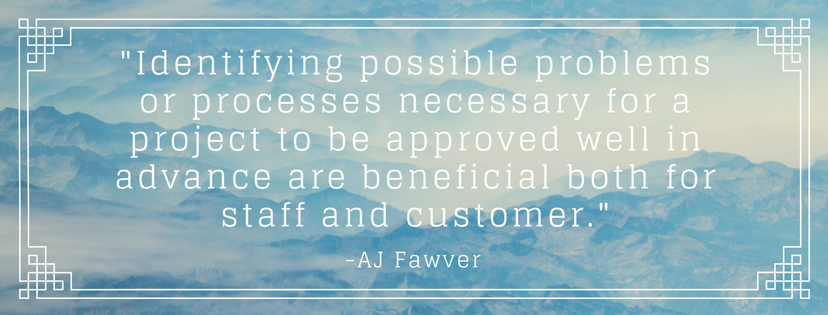
“Planning & Shaping Cities” is a blog by AJ Fawver. Read all of AJ’s posts from the “Planning & Shaping Cities” blog here.
Whether starting a business, pursuing an education, or making a big purchase, we want to know what we are in for ahead of time, don’t we? Of course we do. Being personally invested and/or financially invested is intimidating. So it should come as no surprise that community residents, realtors, buyers, and developers want to know what they, too, are in for…ahead of time. Does your community offer an opportunity to discuss what is required to develop (or redevelop) property?
Call it whatever you like – the Development Review Committee, the Pre-Application Conference or the Pre-Development Meeting. Bottom line, this is the best time to begin the conversation. While it can take some time to refine this tool to work best for your staff and your customers, it is no doubt worth the time. Having a more proactive approach benefits everyone involved. Looking to create this process in your community, or refine your existing process? Here are what I suggest are key elements to consider and address.
- First things first. Have an application with clear parameters about what is required in order to secure such a meeting. Generally, this should include a site plan, map, and a completed application. Think about how to redirect inquiries which only include a single department. Verify the completeness of the submittal before scheduling. Include a place for the customer to list or check off topics or questions they want to cover.
- Manage expectations. Specify the length of meeting, who will be in attendance, and where the meeting will be held. Follow up personally after submittal to confirm time and answer any other questions. Include a clear statement on your application, website, sign-in sheet, or other location that summarizes the intent of the meeting – and what the meeting is not. For example, determining whether a use is possible for a certain location, as opposed to a full plan review with an approval included.
- Prep work is key. Design a time line which allows staff sufficient time to review the information in advance of the meeting. An unprepared group not only prevents an efficient meeting, the customers will also pick up on it. Knowing which reviewers have bigger issues to discuss helps direct how you manage the meeting time. Encourage your staff to communicate problems in advance, and have interdepartmental discussion beforehand if needed.
- Embrace technology. Provide a way to electronically fill out and submit the information. Keep in mind file sizes can be quite large, and plan accordingly. Utilize a fully functional space. Have a conference phone option, or utilize a site like GoToMeeting, for out-of-town customers. A computer with projector or large format monitor/tv is great for incorporating GIS maps and many questions can be answered quickly with these resources. Smartboards or touch technology is incredibly useful.
- Create a culture of respect. Start meetings on time and end them on time. Have a designated staff person responsible for leading and facilitating the meeting. Manage time constraints so that everyone on your team has the opportunity to cover their area of assignment. Keep the meeting on track and on topic.
- Takeaways & additional information. Follow up after the meeting with a summary of what was covered or what topics seemed to warrant the most discussion. Ensure the customer knows what their responsibilities are. Include a quick guide to the key contact people they may need to reach. If processes like design review, platting, or rezoning are necessary, email links to those forms and include any brochures or handouts that could prove useful. Sharing the related board and commission submittal deadlines is very helpful to customers trying to construct a project schedule.
- Measure your success. Check in to see how your team fared. A quick online survey or a phone call is an easy, low cost way to do this. Ask for that while the meeting is fresh on their mind. Keep in mind these ratings or responses can be a great tool for ongoing program evaluation, rewarding and setting the example for quality customer service, and performance standards.
- Get the word out. Partnering with local realtor or builder associations or sharing with your various board and commission members are two ways to do this. Work with your public relations staff to highlight the service, once it is up and running smoothly. Feature it on your website. Reach out to small business associations, and consider including it in speaking engagements with local clubs and organizations.
Hopefully, these seven tips are helpful for you in your work. Identifying possible problems or processes necessary for a project to be approved well in advance are beneficial both for staff and customer. This tool – this service – also provides a means to educate customers, to humanize “the city” by putting faces with names, and to make suggestions while flexibility is possible. These are also excellent opportunities for training new staff members in any department, as they have advance preparation time to review (less pressure!) and learn how to convey requirements in a simple and straightforward way. If your organization or staff is uneasy about implementing all of these measures, start small. Establish the meeting and structure a team. Over time, other elements can be added in.
What has worked for your organization? Any pitfalls or techniques you’d like to share? Know of a community with an excellent example?
